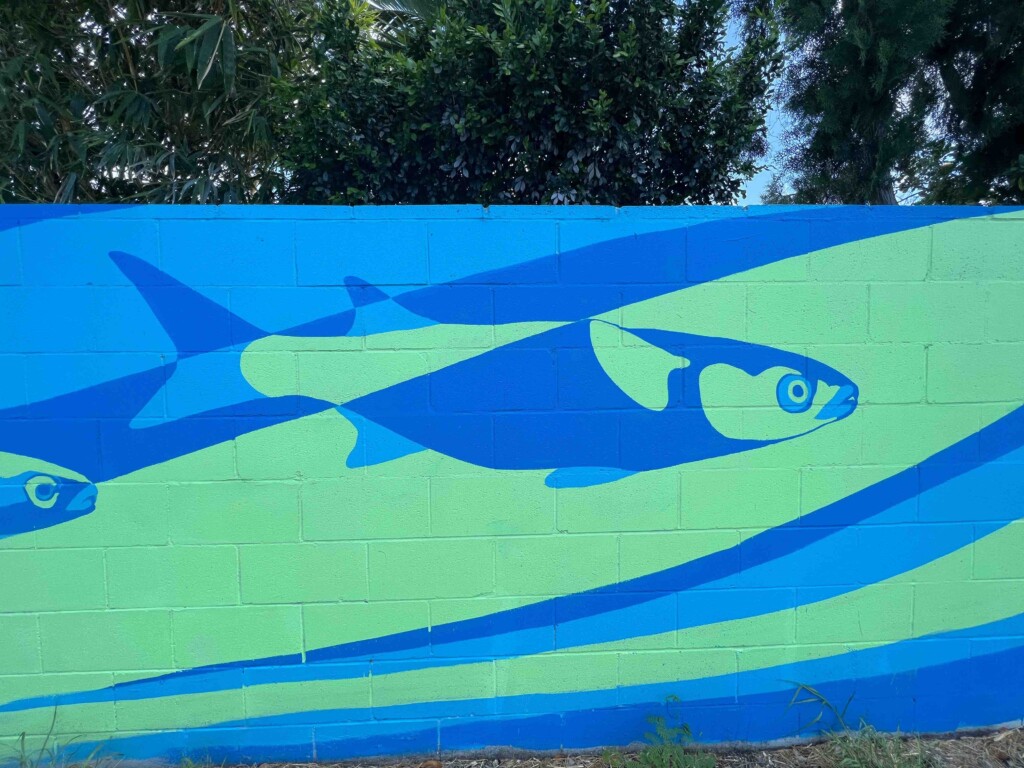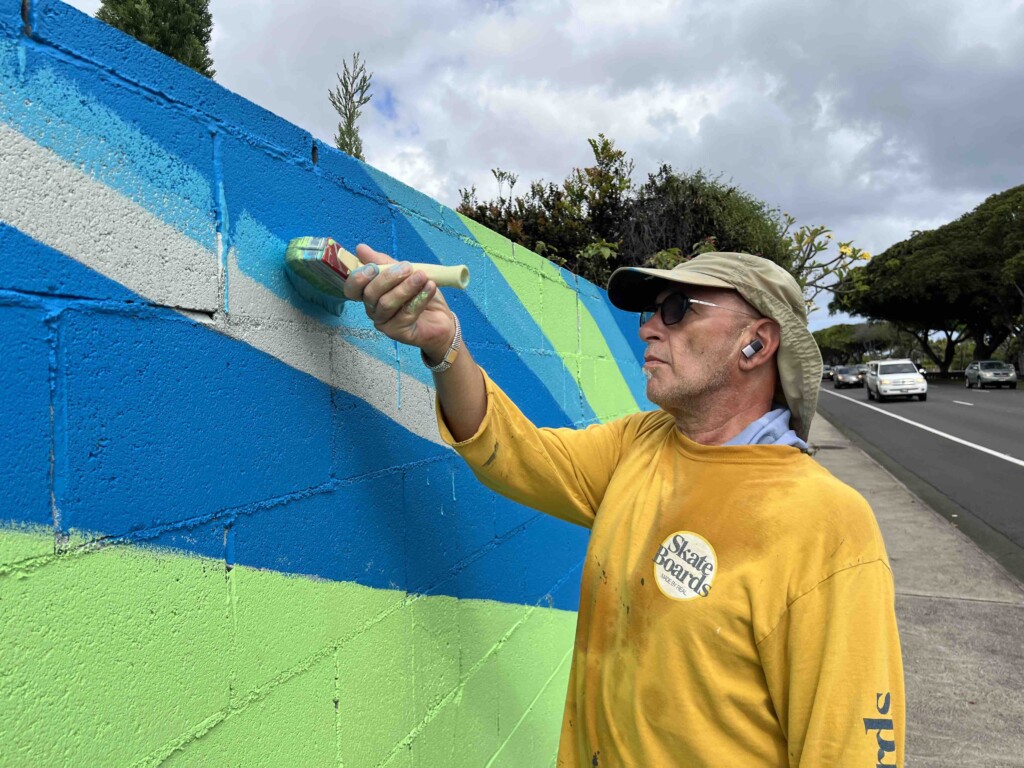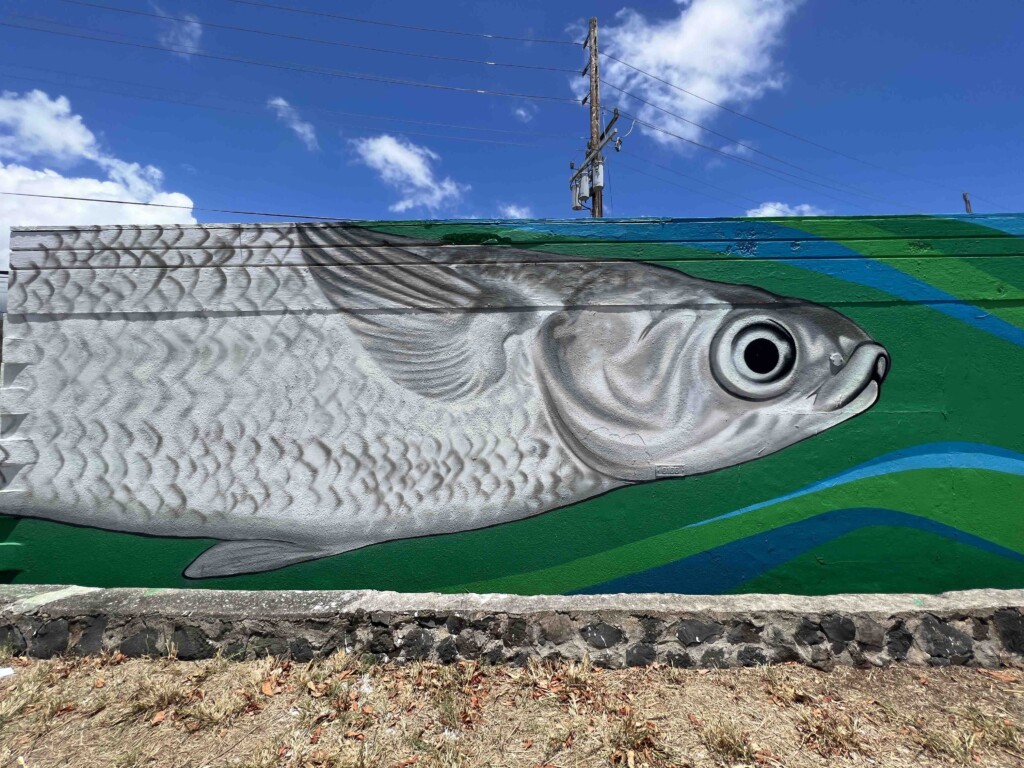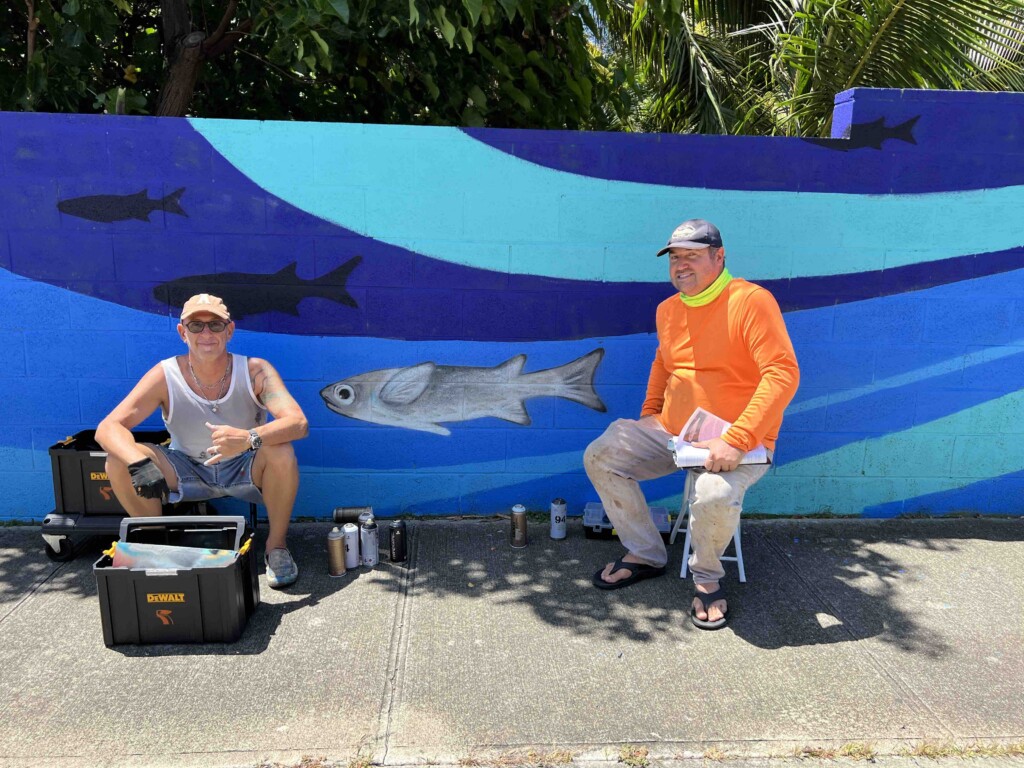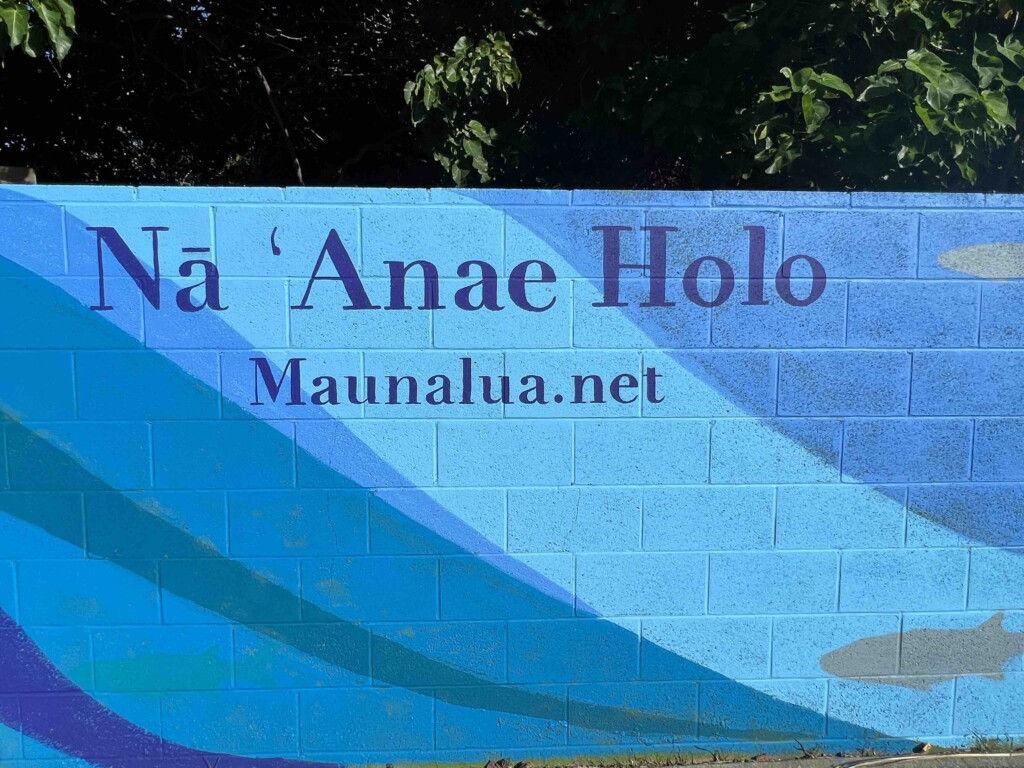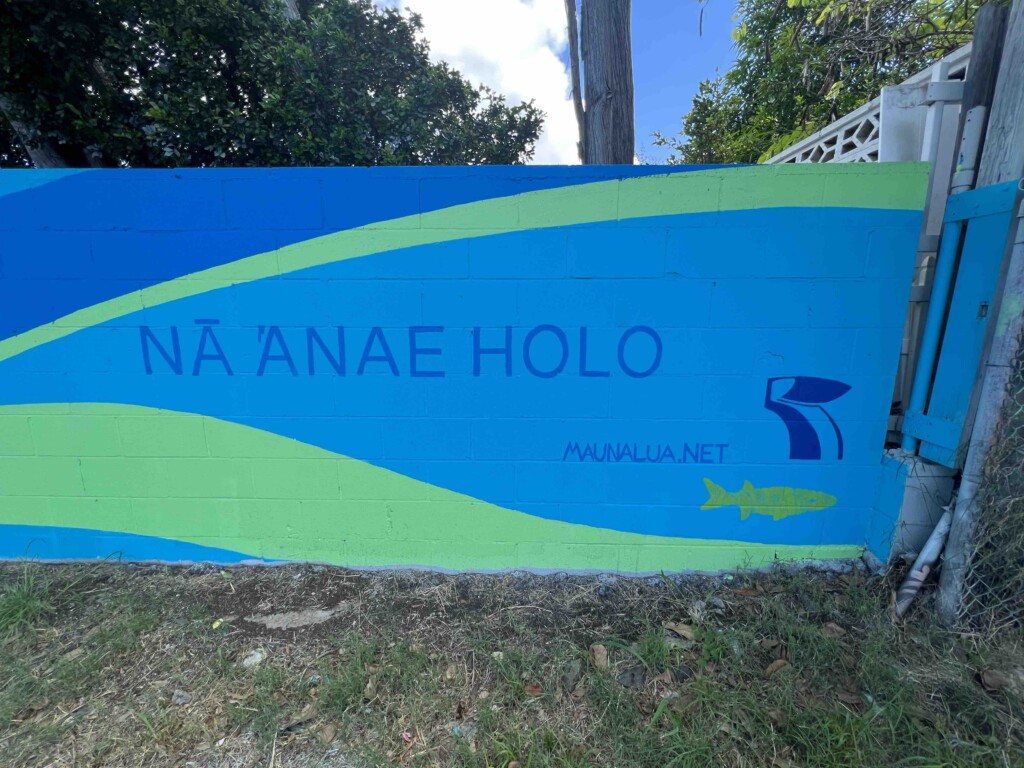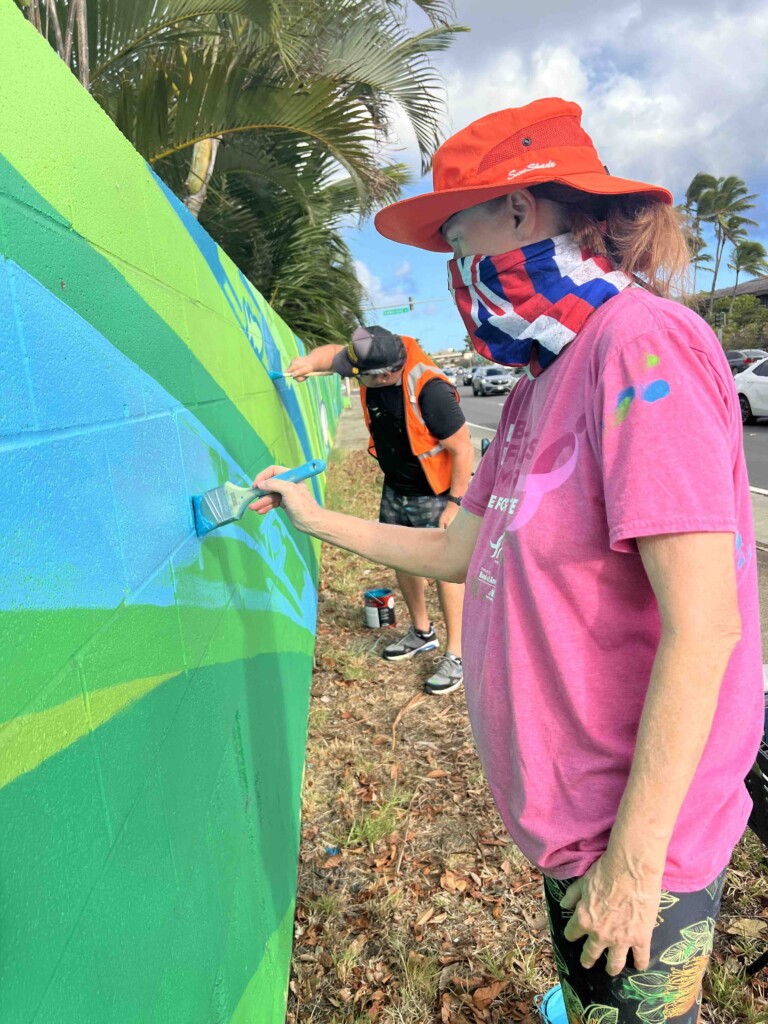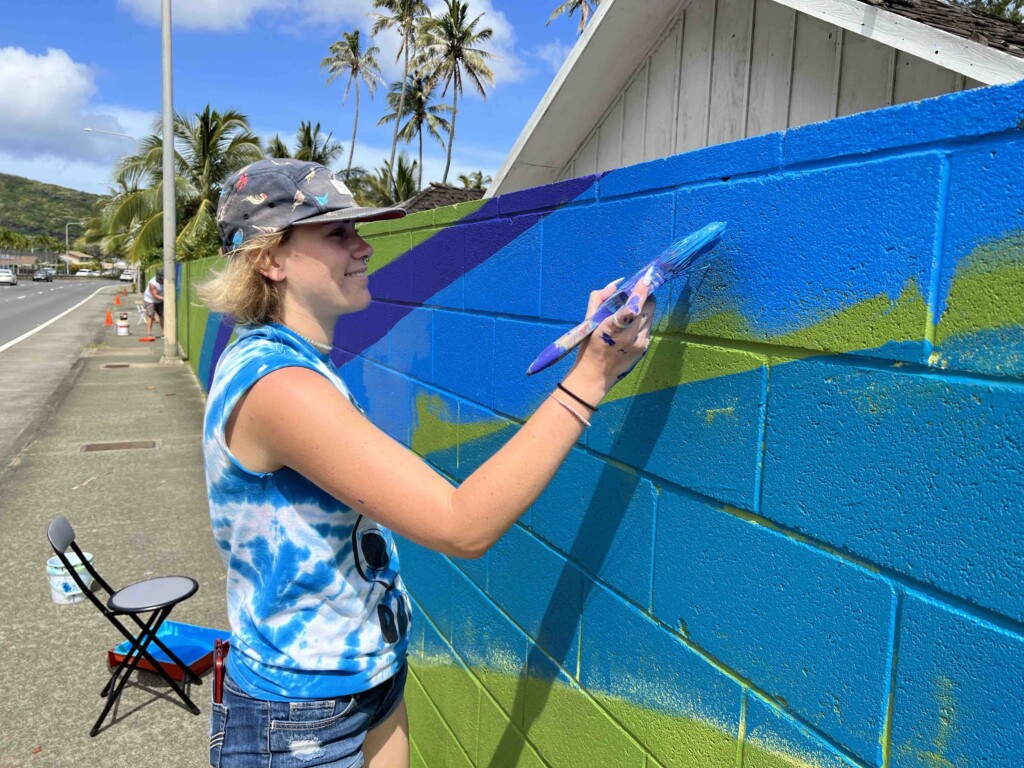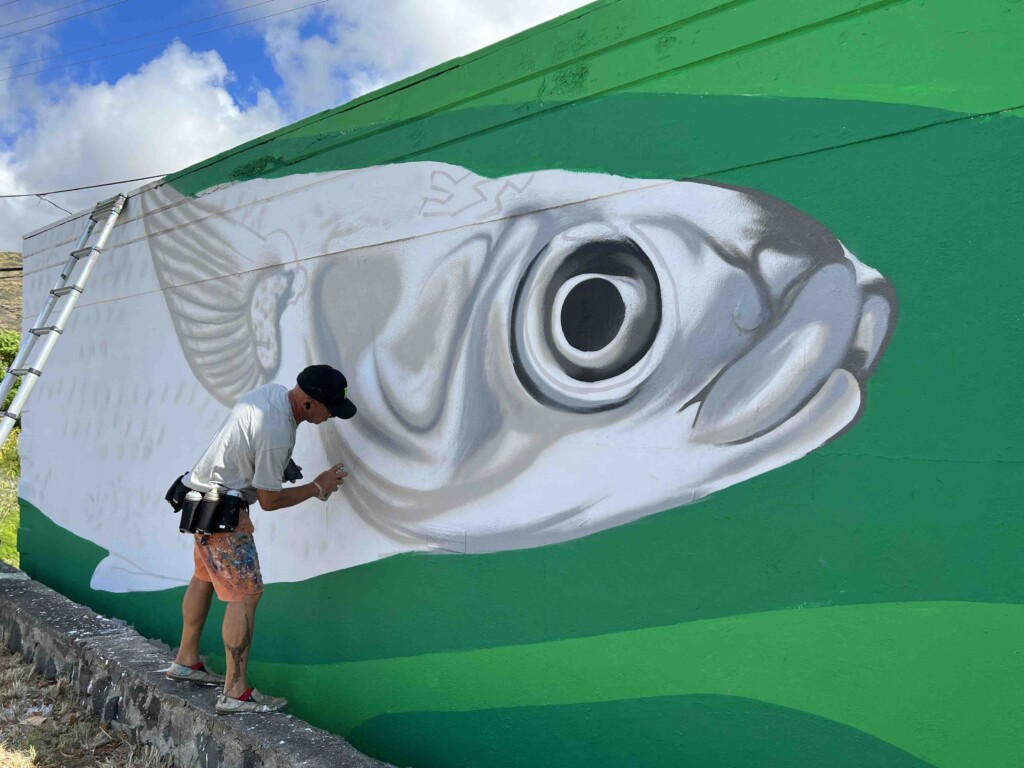
Anne Marie Kirk Reflects on Maunalua.net & the Nā ʻAnae Holo Murals
If you’ve headed east on Kalanianaʻole Highway in Eastern O‘ahu in the recent past, you may recall being greeted by schools of swimming mullet, nā ʻanae holo in Hawaiian, on brightly painted murals along the roadside. You may have even passed through as community members were painting them. The project is part of Maunalua.net and the muse behind its origin is Anne Marie Kirk, a multifaceted creatrix, community member and educator in Maunalua. Learn more about this unique project and significant place in our interview with Kirk below.
Interview with Anne Marie Kirk
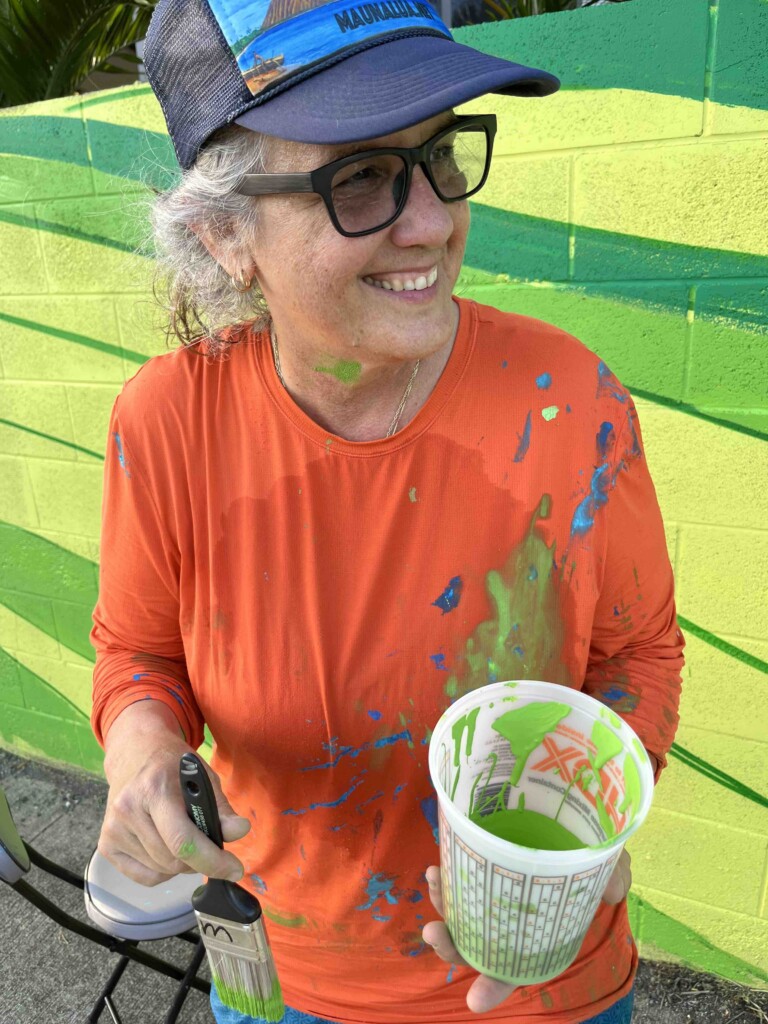
Anne Marie Kirk
Historic Hawai‘i Foundation: Please introduce yourself in a way that feels appropriate.
Ann Marie Kirk: My name is Ann Marie Nālani Kirk. I live in the ahupua‘a of Maunalua* in East O‘ahu.
HHF: What is your professional work and what are some of your interests and hobbies?
AMK: I am a Director/Producer in Digital Media, and most of my work focuses on Hawai‘i and Hawaiian Culture. You can check out bluecratermedia.com to see some of my pieces.
In Maunalua, the community groups I work with dedicate themselves to protecting and preserving cultural and natural resources. These groups are Livable Hawaii Kai Hui, Maunalua Fishpond Heritage Center, the Kaiwi Coalition, and the Wailupe ‘Ohana Council. I also serve as the Educational Kia‘i for Pahua Heiau in Maunalua.
When I am away from my work or community work, you’ll find me in the ocean waters of Maunalua. One of my favorite things to do in Maunalua Bay is Stand-up Paddling with my family and friends.
HHF: Where is Maunalua* and what makes it special?
AMK: Maunalua is located on the south coast of O‘ahu at the east end of Maunalua Bay. Wherever someone calls their home, that is special to them, yes? For me, I call Maunalua home. It is an amazingly beautiful place from mauka to makai. Still, beyond its beauty, there is a wealth of cultural history found in Maunalua, and the spirit and mana of our kūpuna are everywhere.
HHF: Please tell us about your project, Maunalua.net and what inspired you to create it?
AMK: In working to save Hāwea Heiau, a heiau site over 1,000 years old in Maunalua, which was under threat of destruction, I needed to find a way to reach the community and share the story of Hāwea. The idea came to me to create a website that not only shared the story of the heiau but also put it in context within the ahupua‘a of Maunalua. This website became Maunalua.net.
Hāwea Heiau was saved due to an extraordinary community effort built upon the learning and understanding of the sacredness of this wahi pana (sacred site) and its role as a cultural piko (center) in Maunalua.
The Maunalua.net website continues to grow, sharing the cultural history of Maunalua, mauka to makai. The website gives voice to our kūpuna, community members, archeologists, and cultural practitioners, and it celebrates our wahi pana in the area. The website is used in educational institutions and by community members and community groups.
The three guiding principles of Maunalua.net are: A‘o (Learn), Ho‘omana‘o (Remember), Ka‘ana Like (Share).
When community members learn and remember this cultural history, they can share information, and in that process, they enrich their experience in living in and being a part of Maunalua.
HHF: Voice, East Oahu Community News, a Midweek publication, recently featured a wonderful article about your nonprofit Maunalua’s eye-catching wall murals of anae holo or “traveling mullet” between Ainakoa and Maunalua Bay. Please share the genesis and purpose of this project.
AMK: Sharing mo‘olelo (stories) in a digital space and binding together kūpuna voice with the ethernet to create an ever-growing digital space for me to share the story of Maunalua is exciting. But I also feel the importance of sharing mo‘olelo through mural art in the community.
For over ten years, I have wanted to create murals in Maunalua sharing our mo‘olelo – especially the story of nā ʻanae holo, the traveling mullet. The nā ʻanae holo legendary journeys in the waters of Maunalua touches upon and connects our communities in East O‘ahu as the ʻanae holo traveled to the different nā loko i‘a (fishponds) on the East side. The nā loko i‘a are Wailupe, Kupapa, Kalauha‘iha‘i, Kānewai and Maunalua. Although many of these loko i‘a are now gone, we can still celebrate and honor the spaces they once occupied. (Editor’s note: you can view Kirk’s 2021 documentary, Kai Piha: Nā Loko I’a online here.)
I was fortunate to meet artist Ran Noveck, who lives in Maunalua. I shared the mo‘olelo I wanted Maunalua.net to create in nā ʻanae holo murals that “swim” down Kalanianaʻole Highway. Ran immediately understood and took on the project. Ran is a fantastic artist, and Maunalua.net is very fortunate to work with him.
Everyone involved in Maunalua.net’s Nā ‘Anae Holo mural project volunteers. All monies donated to the project go into paints, supplies, and educational tools to share the story of the nā ʻanae holo.
The response to the nā ʻanae holo murals has been off the charts! People are so excited when they see us painting, and we get so many car horns beeping at us and so many yelling out encouraging words as they go by. Getting this kind of feedback means so much to everyone working on the project. We are doing this work for the community, and the community has totally embraced the project. They keep asking us to do more murals!
What has been wonderful, too, is the number of people who visit us and bring lei, food, and drink, or just want to talk story with us about their remembrances of the ʻanae holo. It is chicken skin. A phenomenal experience for all of us.
HHF: Are there volunteer opportunities for people to learn more about Maunalua and help steward the ʻāina (land) and kai (sea)?
AMK: If people want to support the maunalua.net mural project, we kindly accept donations! You can donate here. There are many ways to get involved in Maunalua Mauka to Makai by volunteering with these 2 community groups I work with and highly recommend: Livable Hawaii Kai Hui and Maunalua Fishpond Heritage Center
HHF: What’s on your wish list for the future? Is there anything else you’d like to share with our audience?
AMK: The website Maunalua.net will continue to grow as new mo‘olelo are revealed. And exciting projects are coming up, so please check out the Maunalua.net website for more information.
Lastly, I believe the strength of mo‘olelo lies in its ability to transform how the community looks at itself when the story of the ʻāina, the kai, and our kūpuna are revealed, remembered and celebrated. I believe mo‘olelo can be spoken, written, painted, or put out in a digital format, but no matter how it comes to you, it does not lose its mana. That is the strength of our kūpuna, and that is the strength of our Hawaiian Culture.
*”Maunalua encompasses the area from southeast O‘ahu at Koko Head to Kūpikipikiʻō on the slopes of Diamond Head. It includes the area known today as “Hawaiʻi Kai.” It is said that fire goddess, Pele, had a fondness for Maunalua. According to moʻolelo, or legends, Maunalua was the landing spot of some of the first people to migrate to Hawaiʻi from central Polynesia. Another legend about Maunalua concerns a sacred drum that was placed in Hāwea, a heiau or place of worship for ancient Hawaiians.
This ahupuaʻa, a basic Hawaiian division of land, was notable for its 523-acre loko iʻa (fishpond) called Kuapā. It is likely that the inhabitants at Maunalua were mainly fishermen, but the area was also known for its sweet potato farming. “Source: http://placenamesofhanauma.weebly.com/maunalua.html
View the photo gallery below highlighting work days for the project.
Visit Maunalua.net to learn more about this significant area. There are many ways to get involved in Maunalua Mauka to Makai by volunteering with
Livable Hawaii Kai Hui and Maunalua Fishpond Heritage Center
All photos courtesy Anne Marie Kirk.
- Artist Ran Noveck
- ‘Anae, first wall
- Ran painting the second wall.
- A volunteer painting the second wall.
- Mama Nui
- Ran and Chris Cramer, Maunalua Fishpond Heritage Center
- Title, the third wall
- Volunteer painting 3rd wall.
- Volunteers painting the third wall.



